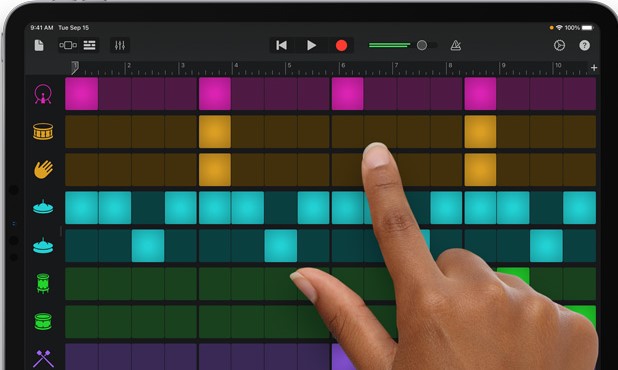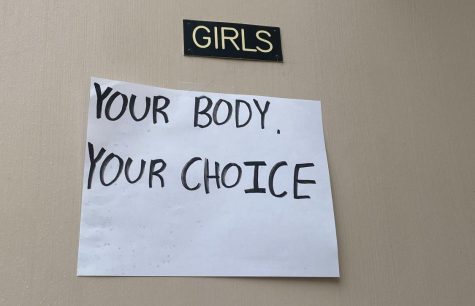The Devolution of Popular Music
Apple’s Garage Band app for ios: an example of a mobile digital workspace that includes pre-set live loops and samples: all one needs to produce a hit song today.
Good music has always been determined by preference, which makes anyone’s opinion on it subjective. However, there are certain factors that objectively determine “good music,” and many of these attributes are absent in modern music. While being a musician may give me a more technical view of music, many casual listeners can agree that the music of yesteryear possesses a special ambience that is unreplicated by today’s mainstream music.
In 2012, a study performed by the Spanish National Research Council took 500,000 songs from the period 1955-2010 and input them into a specific algorithm that measured the timbral diversity, harmonic complexity, and loudness of each song.
Timbre is characterized by the quality and texture of the sounds in a song. According to the study, the timbre of music has plummeted, caused by the decreasing variety in instrumentation and recording techniques. Especially when digital workspaces took over, modern pop music has been defined by very few instruments, almost all electronically based. Computerized drum machines and synthesizers that are merely found on a laptop have become the staple “instruments” in most popular compositions. While the simplicity of recording a full fledged song on a singular device without the need for any instruments may make music production much more accessible, it devalues the importance of playing real instruments and flatlines the tibral diversity in popular music.
Throughout the years, music has also grown to be less harmonically complex. Many of today’s pop songwriters use basic chord changes and melodies that mimic millions of pop songs written before them, and they refuse to expand past the rudimental patterns of music theory. This means that songwriting is increasingly less creative, as boundaries are maintained in a repetitive cycle. Listeners have become comfortable with these basic harmonic progressions and patterns and pop artists are unwilling to harmonically develop their compositions. This explains why much of modern pop music sounds the same.
Lastly, the loudness of music has increased over time due to the overuse of compression. Producers use compression to bring up the volume of the softer parts of a song to match that of the louder parts, ultimately lessening the distance of volume between the notes. This degrades the timbral quality and the overall dynamic range of the music. This tendency of increasing the volume spurs from the desire to have an artist’s track stand out to the listeners ears, disregarding the negative implications of it.
The study supports the general feeling that has been brewing for a while: the overall quality of mainstream music has decreased significantly over the last several decades.
The music industry also plays a huge role in the decreasing quality of music. Because of the effort and money it takes to promote musical artists, record labels mostly stick to the artists who create this type of comfortable, modern pop music, as there is less risk of it failing. This perpetuates the cycle of listeners being fed mundane but similar content, listeners then craving this content, and musical artists continuing to produce it.
After the rise of streaming services, record labels began to lose profit because almost half the cut started going to these major services, such as Spotify and Apple Music. As a result, many record labels decided to relieve their Artists and Repertoire Executives, the managers who filter through bad music to find the rare talent. These executives were no longer needed because record labels focused on investing in the artists who made music that fit the “comfortable code.” Therefore, the talent of modern artists is not nearly as valued as before because the mediocre music they are capable of creating is what sells.
The current state of popular music is disappointing. The passion and emotion that resonates within a Stevie Wonder song does not seem to be present in today’s modern records. I believe that the initial catalyst of the devolution of music was the digital age.
The computer has become a platform that anyone can use to make music, even those with no knowledge of music at all. The samples and plugins digital workspaces provide give any Average Joe the tools to make a hit song in a few minutes. Although more and more people are engaging in music as a result of this, more and more people have less interest in learning an actual instrument because they don’t need to to become famous. Kids hear pop and rap music all over the internet, and are inclined to create music just like it. The accessibility of samples and digital instruments combined with a decent knowledge of how a digital workspace functions is what drives many people’s musical interests. Therefore, those who aim to be musical artists often ignore learning the harmonic and rhythmic aspects of music, music theory, and instruments. They also ignore studying and listening to older music since the modern music being promoted everywhere does not resemble it, and is not created on merely a computer.
Overall, the knowledge one has to obtain and the talent one has to possess to become a popular musician today is miles below that of 50 years ago. And those who actually do study music and expand upon their raw talent do so in the framework of the popular demand, therefore only creating music for the comfortable ear. As long as labels continue to pump out music that fits within this comfortable box, artists will continue to create music that fits within the box, and the perpetual devolution of popular music will continue as well.













Rod Ingram • Dec 31, 2022 at 7:28 pm
Thank God for Rock